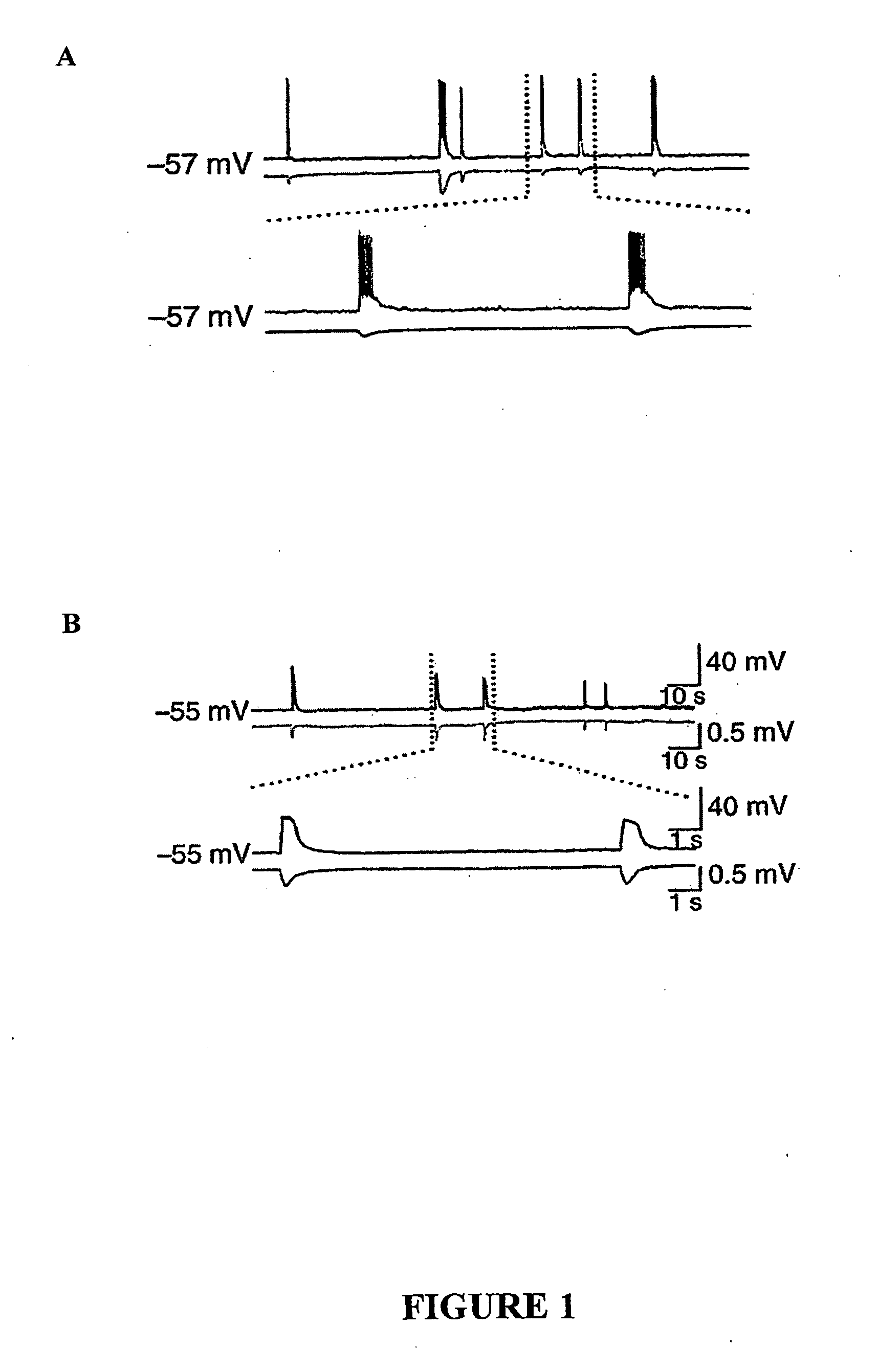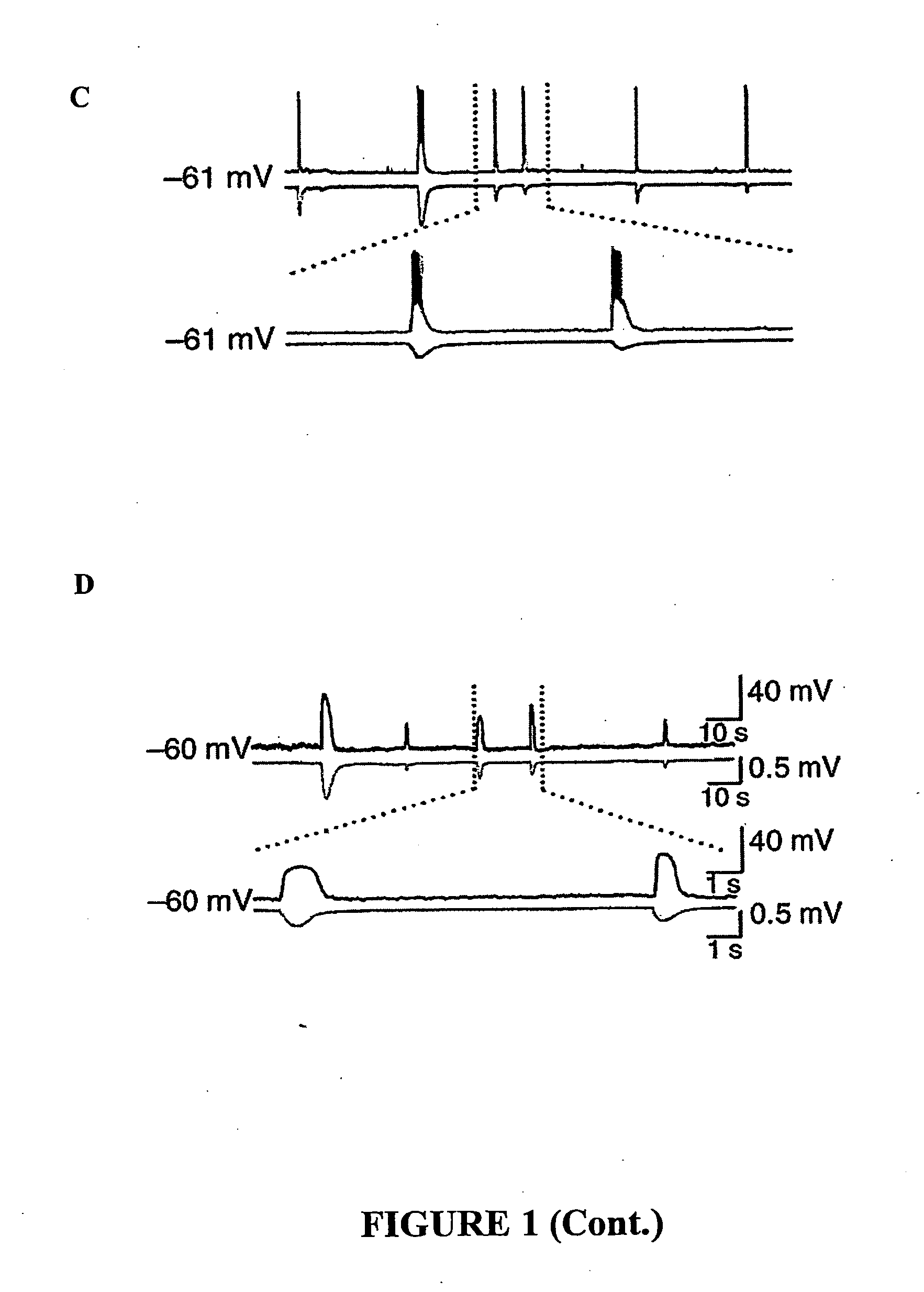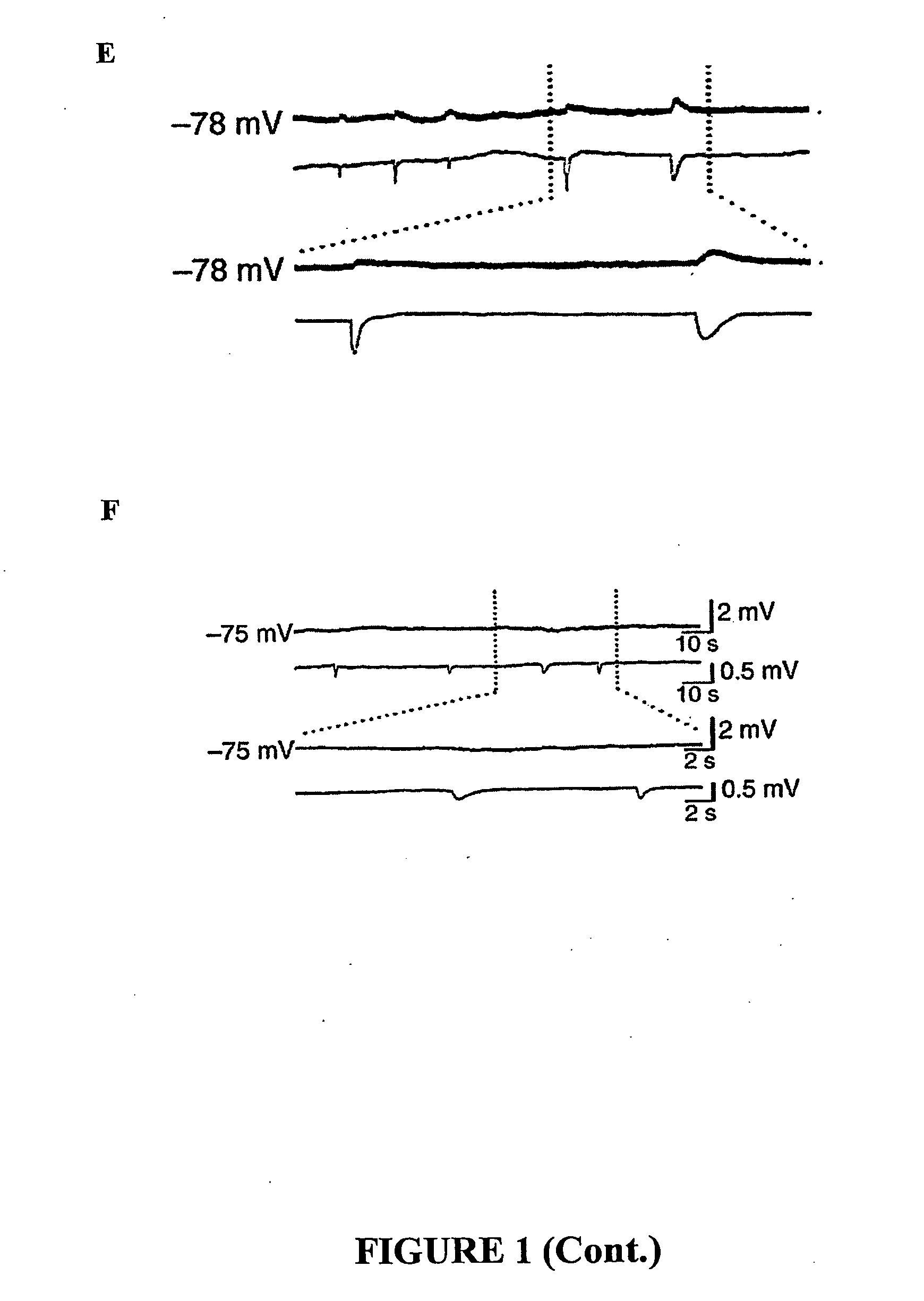Treatment and prevention of epilepsy
a technology for epilepsy and treatment, applied in the field of treatment and prevention of epilepsy, to achieve the effects of reducing seizure activity, normal eeg activity, and stable astrocytic cytosolic ca2+ levels
- Summary
- Abstract
- Description
- Claims
- Application Information
AI Technical Summary
Benefits of technology
Problems solved by technology
Method used
Image
Examples
example 1
Materials and Methods
[0042]Slice preparation, 2-photon laser scanning imaging, and photolysis: Hippocampal slices were prepared from Sprague-Dawley (SD) rats (P14-18) as previously described (Kang et al., “Astrocyte-Mediated Potentiation of Inhibitory Synaptic Transmission,”Nat. Neurosci. 1:683-692 (1998); Zonta et al., “Neuron-to-Astrocyte Signaling is Central to the Dynamic Control of Brain Microcirculation,”Nat. Neurosci. 6:43-50 (2003); Liu et al., “Astrocyte-Mediated Activation of Neuronal Kainate Receptors. Proc. Natl. Acad. Sci. USA 101:3172-3177 (2004), which are hereby incorporated by reference in their entirety). The slices were mounted in a perfusion chamber and viewed by a custom built laser scanning microscope (BX61WI, FV300, Olympus) attached to Mai Tai laser (SpectraPhysics, Inc.). For Ca2+ measurements, slices were loaded with the Ca2+ indicator, fluo-4 / AM (10 M, 1.5 h; Molecular Probes). For uncaging experiments, NP-EGTA / AM (200 μM; Molecular Probes) was co-incubate...
example 2
PDSs Can Be Triggered by an Action Potential-independent Mechanism
[0048]To examine the cellular mechanism underlying PDSs, CA1 pyramidal neurons in rat hippocampal slices exposed to 4-aminopyridine (4-AP) were patch clamped. 4-AP is a K+ channel blocker that induces intense electrical discharges in slices (Luhmann et al., “Generation and Propagation of 4-AP-Induced epileptiform activity in neonatal intact limbic structures in vitro. Eur. J. Neurosci. 12, 2757-2768 (2000), which is hereby incorporated by reference in its entirety) and seizure activity in experimental animals (Yamaguchi et al., “Effects of Anticonvulsant Drugs on 4-Aminopyridine-Induced Seizures in Mice,”Epilepsy Res. 11:9-16 (1992), which is hereby incorporated by reference in its entirety). All slices exposed to 4-AP (61 slices from 23 rats) exhibited epileptiform bursting activity expressed as transient episodes of neuronal depolarizations eliciting trains of action potentials (FIG. 1A). Bath application of TTX pro...
example 3
Glutamate Release Mediates Paroxysmal Depolarization Shifts
[0050]To examine the role of glutamate released from action potential-independent sources in PDSs, the occurrence of PDSs in the presence of TTX and GluR antagonists was quantified. The PDSs evoked by 4-AP resulted primarily from activation of ionotropic glutamate receptors, because APV and CNQX potently reduced both the frequency and the amplitude of the PDSs, in accordance with earlier studies (FIGS. 2A-C) (Meldrum, B. S., “Update on the Mechanism of Action of Antiepileptic Drugs,”Epilepsia 37 (Suppl.):6, S4-11 (1996), which is hereby incorporated by reference in its entirety). Washout of TTX, APV, and CNQX resulted in partial recovery of PDSs, as shown in FIGS. 2A-C. Addition of VGCC blockers did not cause an additional decrease in the frequency and amplitude of PDSs compared with TTX alone, further supporting the notion that glutamate was released from an action potential-independent source (FIG. 2D). PDSs persisted in t...
PUM
| Property | Measurement | Unit |
|---|---|---|
| Volume | aaaaa | aaaaa |
| Volume | aaaaa | aaaaa |
| Volume | aaaaa | aaaaa |
Abstract
Description
Claims
Application Information
 Login to View More
Login to View More - R&D
- Intellectual Property
- Life Sciences
- Materials
- Tech Scout
- Unparalleled Data Quality
- Higher Quality Content
- 60% Fewer Hallucinations
Browse by: Latest US Patents, China's latest patents, Technical Efficacy Thesaurus, Application Domain, Technology Topic, Popular Technical Reports.
© 2025 PatSnap. All rights reserved.Legal|Privacy policy|Modern Slavery Act Transparency Statement|Sitemap|About US| Contact US: help@patsnap.com



